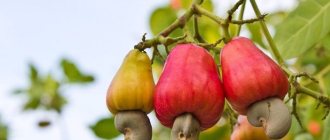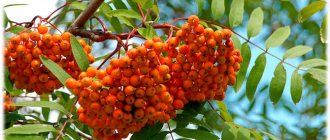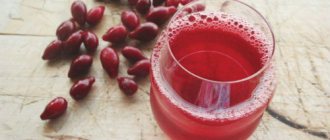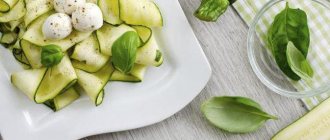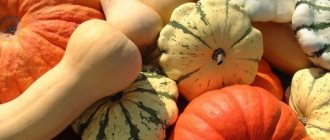In recent years, mango fruits (Mangifera indica) have gained immense popularity among visitors to Russian supermarkets. At the same time, the benefits and harms of this gift of the tropics are known to the residents of our country only superficially.
Photo: Depositphotos.com. Author: Dream79.
This sweet fruit belongs to the Sumacaceae family and grows in almost all tropical countries of Asia, in some countries of Latin America, as well as in Spain and the Canary Islands. But India is considered its homeland. According to legend, the mango tree (mangifera) was created by the god Shiva as a gift for his beloved. In modern India and Pakistan, the plant is revered as sacred. It is not surprising, because mango fruits have a lot of useful properties, so that countries that cultivate this fruit annually sell hundreds of thousands of tons to other countries.
Appearance and varieties
Mango fruits are round, elongated, with smooth thin skin and juicy fibrous yellow-orange pulp. The large stone consists of a strong shell and a soft nucleolus.
The weight, color of the peel and even the shape of the fruit depend on the variety. To date, more than 69 varieties are known. There are more than a dozen of them in Thailand alone; Moreover, some are in great demand and are mainly exported, while others are considered fodder, so in many areas their fruits are not even collected from trees.
How to choose a ripe mango
You cannot choose a mango based solely on color. The color of the fruit depends entirely on the variety and place of growth. Therefore, you should not be surprised that there are fruits of brown, green or orange on the shelves nearby. Although there is a trick here too. It is better to choose a brighter shade, this indicates that the fruit is fully ripe. The peel of the fruit should not have mechanical damage and have a matte, bright surface.
If you notice that the fruit has dark spots, even small ones, it means it is already overripe. You should not take fruits that have flabby skin. This means that they have been on display or in a warehouse for too long; in other words, they have withered. Severe roughness and wrinkling of the peel indicates that the fruit was picked while still unripe.
Be sure to smell the fruit, it should have an exotic smell with pleasant fruity notes, the smell should “invite” you to taste it. The absence of odor indicates that it is unripe or overripe. If there are notes of alcohol tincture or a sour smell, the fruit has already deteriorated.
If the fruit is in good condition, then when you press on it, like meat, it will quickly restore its structure. If a fingerprint remains, then, alas, the fruit is overripe.
Be sure to pay attention to the label. It is clear that it is very difficult to bring and preserve fruits from another continent. But the fewer pesticides there are, the better.
If you buy an unripe fruit, do not be upset; it can be brought to the desired ripeness at home. The fruit is placed in a paper bag, most importantly not in plastic, and placed anywhere at room temperature. In just a few days the fruit will be ready for consumption. To speed up the ripening process, you can place a banana or apple in a bag of mangoes, which will release ethylene gas, which speeds up the ripening process.
Composition and nutritional value
Mango pulp contains an impressive part of the periodic table. The composition of the fruits includes:
- calcium;
- phosphorus;
- zinc;
- iron;
- manganese;
- potassium;
- selenium;
- magnesium;
- copper;
- trace amounts of other trace elements.
Mangifera fruits contain amino acids important for the human body, including essential ones.
Vitamin composition: A, B, D, E, K, PP and high doses of vitamin C. In some varieties, 100 g of pulp contains up to 175 mg of ascorbic acid. For comparison: in lemons its content does not exceed 40 mg per 100 g.
- Fruit pulp contains a large amount of extremely healthy carotenoids, which give the fruit a rich yellow-orange color.
- Mango peel and leaves are rich in tannins - polyphenolic compounds with a wide range of beneficial properties. Let us remind you that there are especially many such substances in black, green and other types of tea.
- Mangosteen (not to be confused with the tropical fruit of the same name) is extracted from mango seeds - a chemical substance with pronounced antipyretic properties.
The fruits have a fairly high calorie content: 67 kcal for every 100 g. This is due to the presence of a large amount of carbohydrates: over 11%. Proteins and fats, on the contrary, make up no more than 0.5% of each nutrient group.
Application
Delicious and aromatic mango pulp serves as a delicious delicacy and an excellent dessert. This fruit is eaten fresh and canned in sugar syrup, and it is also dried and pickled. Mango is used to make jam, jelly, marmalade, confiture, preserves, filling for sweet pastries, and is added to fruit salads and ice cream. Juicy mango pulp serves as a raw material for the production of juices, liqueurs and soft drinks.
Market Analytics
- COVID-19 is changing the rules of the game in the cosmetics market
- Beauty of the future: cosmetic innovations 2020
- New ingredients are the driving force of the cosmetics industry
Convenient search for beauty salons on our website
Beauty salons in Moscow Beauty salons in St. Petersburg Beauty salons in Ekaterinburg Beauty salons in Novosibirsk
Latest blog posts on our website
- Naturecream / Geranium (Pelargonium) oil for skin health and beauty
- Prostye-sovety / Save on a beauty salon: procedures that can be done at home
- Naturecream / Growth Factor - brings back youth?
- Oksana-Lezina / 3 effective abdominal exercises from a fitness instructor for beginners
- Prostye-sovety / Making perfect curls at home
- Prostye-sovety / Which hair removal method to choose
- Naturecream / Wrinkles Puppets
- Naturecream / PEPHA-TIGHT - instant skin lifting
- Naturecream / Blue light - a danger to the skin
- Naturecream / Cocoa Butter – A treat for the skin
Latest forum topics on our website
- Mrs._Smith / Badly sunburned! What to do?((
- Ice / Is it necessary to combine fitness classes with a diet?
- Antonova / What can be used for hair loss?
- Radio operatorKat / Who was on a protein diet?
- Suzanna / Mesotherapy on the face
Other articles in this section
| Blueberry Blueberry is a perennial low-growing shrub, rarely reaching a height of more than 40 cm. Greenish-white flowers with a delicate pink tint appear in May-June and by mid-summer the fruits are already ripening. The berries are round in shape, small, slightly flattened, blue-black with a bluish bloom. The juicy pulp is dark red, sweet and sour, often astringent, and contains many seeds. Blueberries are good honey plants, but the plant needs good light to bear fruit. Productivity is also highly dependent on temperature conditions during flowering and ripening. Blueberries have such a wide range of beneficial properties that they are rightfully considered a medicinal plant. The fruits, leaves and shoots of blueberries are widely used in folk medicine. |
| Passion fruit Passion fruits are round or oval in shape and, depending on the variety, yellow or purple in color. Its sweet and sour pulp is hidden under a thick shell and contains many seeds; it is very aromatic and juicy. The surface of the fruit can be smooth and shiny or rough with small cracks. The sweetest fruits are the large, wrinkled fruits with dark purple skin. |
| Peach Peach fruits have very juicy and tender pulp. Depending on the variety, they are round or oval in shape with a groove on one side and thin skin, usually covered with fluff. The stone is medium in size, of a characteristic shape with one pointed end and an uneven surface covered with dimples and grooves. The flesh of peaches comes in cream, yellow and pink colors. Depending on the appearance of the fruit, 4 classes are distinguished: “real peaches” with velvety skin, the pulp of which is easily separated from the pit; naked “nectarines” with pulp that easily separates from the stone; “pavies” - the fruits are velvety, the pulp does not separate from the stone; “brugnons”, “violettes” - the fruits are bare, the stone is not separated from the pulp. |
| Guava Guava resembles small, thin-skinned apples with many hard seeds inside. The fruits have a slightly bumpy surface, round or pear-shaped, and become yellow when ripe. The pulp can be of different shades: white, pink or red, has a bittersweet taste, reminiscent of both pineapple and strawberry, and a delicate aroma. |
| Mandarin Externally, tangerines are very similar to oranges: the same orange color, the same round shape, only smaller in size. The main difference is the pulp of tangerines, which is softer, more aromatic and sweeter. The peel of tangerines is thin, does not adhere tightly to the pulp, and the segments are well separated. The name “mandarin”, which is familiar to buyers, actually applies to varieties with a yellowish-orange peel and a slightly flattened shape, among which the most popular are the “satsuma” variety - sweet seedless tangerines, the “unshiu” variety - the most sour, and the “santra” variety. - the thickest-skinned tangerines. The more rounded fruits with red-orange skin are called “tangerines.” Their pulp is sweet and sour and contains many seeds. |
| Rambutan Rambutan is a tropical fruit from the Sapindaceae family, a relative of lychee and longan. The fruits are round in shape and up to 6 cm in diameter, growing in clusters of 25-35 pieces. Ripe fruits have a dense red-brown skin, covered with a large number of hard, crocheted hairs at the ends. The food used is white or milky pulp with a jelly-like consistency, inside of which there is a large oblong bone. The pulp of rambutan is juicy, sweet, with a slight sourness and a pleasant aroma. |
| Lychee Lychee is a tropical fruit from the Sapindaceae family, a relative of longan and rambutan. Lychee fruits are small in size, oval or round in shape. Ripe fruits have a dense, bumpy, red-brown skin, covered with a large number of sharp protrusions. The food used is white or milky pulp with a jelly-like consistency, inside of which there is a large oblong bone. Lychee pulp has a pleasant, refreshing sweet and sour taste and a delicious aroma. |
| Chempedak Chempedak is adjacent to fruits such as jackfruit, durian, marang and has a similar structure and chemical composition of the pulp. Medium-sized fruits weighing from 1 to 5 kg have an elongated shape, growing about 40 cm in length and 15 cm in width. Ripe fruits have a yellow-brown skin and a rich, pleasant aroma. The pulp of cempedak is dark yellow or orange, tender, creamy in consistency, juicy and sweet, similar in taste to sweet dough. It consists of many lobes in which round bones are located. Chempedak contains almost no latex, only a small amount is found in the core and on the peel. |
| Pitaya Pitaya, pitahaya or dragon fruit, ripens at the ends of the stems of a tree-like cactus. The fruits of unusual appearance are covered with an inedible peel, under which there is a creamy pulp with a large number of small seeds. Dragon fruit is brightly colored: red, yellow, pink and may be covered with small projections or thin scales. Pitaya grows in different sizes, mature fruits weigh from 150 to 600 g. The color of the flesh can be white, pink or deep purple. The taste of pitaya is not as extravagant as its appearance - unsaturated, slightly sweet and depends on the type. The rarest and sweetest fruits with white pulp and yellow skin. The Costa Rican pitahaya has bright red flesh under the red shell, which turns the urine red. The most common is the pitahaya, which has a bright pink skin and has earned the name “dragon fruit.” |
| Sea buckthorn Sea buckthorn is a shrub or small tree, reaching a height of 3 meters, the branches are covered with small thorns and densely located fruits on short stalks. The fruits of the plant are small oval berries of yellow-orange color with a refreshing sweet and sour taste and a pleasant aroma, vaguely reminiscent of pineapple. |
We consider useful properties
Mango can safely be called the king of tropical fruits. The fruits and leaves of this plant contain a lot of useful substances that explain its healing properties from a scientific point of view.
- Fruits are an excellent means for losing weight: they cleanse the body, normalize water-salt balance, and speed up metabolism. There is even a special mango diet that allows you to lose excess weight quickly and without much harm to your health.
- The pulp contains a large amount of fiber, which stimulates intestinal function - a note for people suffering from constipation or, conversely, diarrhea.
- In Russia, with the onset of cold season, the demand for fruits rich in vitamin C increases sharply. Most often, lemons and oranges are found in the consumer basket; but in order to increase immunity, you can also buy mangoes. These sweet fruits help cope with infectious diseases, increase body tone and serve as an excellent flu prevention.
- It will be beneficial for kidney and bladder diseases. The substances contained in the fruits improve the functioning of these organs, prevent the development of urolithiasis, and help reduce inflammation in pyelonephritis.
- Thanks to retinol in the pulp, mangoes are good for vision. With regular use, the risk of developing myopia and night blindness is reduced. Helps cope with dry cornea and eye fatigue.
- The role in preventing cancer is beyond doubt. With frequent consumption of this fruit, the risk of developing many types of cancer is reduced several times.
- The antiseptic properties of mangoes are often used to prevent gum and dental diseases. Thus, in medieval Spain, these fruits played an important role in the fight against scurvy, along with citrus fruits.
- Positively affects the functioning of the nervous system. Plant endorphins in fruit pulp improve memory, activate thought processes, elevate mood, and help cope with stress.
- An important and recently confirmed by scientists beneficial property of mango juice concerns the prevention of atherosclerosis, a disease that increasingly affects not only representatives of the older age group, but also middle-aged people.
Despite the fact that the highest concentration of nutrients is contained in the pulp, the peel, fruit seeds and leaves also have several trump cards up their sleeve.
For example, nucleoli are used for asthma, and a decoction of mangifera leaves is used to treat and prevent the following ailments:
- varicose veins;
- poor blood clotting;
- diseases of the cardiovascular system;
- disturbances in the functioning of the pancreas;
- heartburn;
- caries, etc.
Finally, mango leaves are a real salvation for diabetics. A decoction of this plant material normalizes blood glucose levels and helps preserve vision, which often deteriorates with this disease.
What fruits are allowed for diabetes?
Eating mango
Mango can be eaten raw, stewed and canned. Mango is especially popular as an ingredient for making desserts, fruit salads, ice cream and various confectionery products.
Mangoes are used to make liqueurs, exotic cocktails and juices. This fruit is added to some European dishes to add a special taste, for example, to fish and meat dishes.
With regular consumption of one fruit per day, the liver is cleansed, the symptoms of diarrhea, anemia, hemorrhoids are relieved, and the elasticity of blood vessels increases and the likelihood of developing dysbiosis is reduced.
For children and pregnant women
Photo: Depositphotos.com. Author: Morcillo7.
The fruit is especially beneficial for the health of pregnant women. The nutrients it contains help cope with anemia, support the proper development of the fetus, and improve a woman’s immunity. But due to the increased risk of allergies, the consumption of mangoes during pregnancy must be agreed with a doctor.
Young children can add a spoonful of mango puree to their daily diet, and older children can make sweet salads from this tropical guest. If there is no allergy, it has an extremely positive effect on the child’s body.
Harm and contraindications
Despite the many miraculous properties, it is not recommended to eat mango uncontrollably. It is not useful for everyone, and in some situations it can become truly dangerous to health.
Like many other tropical fruits, mango is a strong allergen. When trying it for the first time, you need to be careful. If after a small piece you notice a rash, runny nose, or indigestion, these are clear signals to give up exotic foods in your diet.
Bad news for people who prefer to have a glass or two at dinner: the fruit does not go well with alcohol and can cause illness.
Even a completely healthy person can become unwell (heaviness in the stomach, colic, etc.) if he eats more than 2 pieces in one day. Since mango is a rather difficult product for the digestive system.
Unripe fruits are insidious: even in small quantities they can cause stomach cramps, constipation and even fever.
Is it possible to eat mango while breastfeeding?
If the mother did not consume the fruit during pregnancy, then the baby is at high risk of an allergic reaction. To check this, you can eat a small piece of fruit and observe the condition of the mother and child. If everything is in order, then the quantity can be increased little by little.
Recommended reading: Benefits of apricots for the body
A nursing mother needs to choose mangoes very carefully: fruits with dents and scratches may be overripe and negatively affect the functioning of the gastrointestinal tract.
Attention! Even in the absence of unpleasant symptoms, it is not recommended to consume more than 100 grams of mango daily.
Gifts of the mango tree
Mangifera, in addition to fruits and leaves, gives people other useful products.
- The oil is used for cosmetic and medicinal purposes. It has an almost magical effect on the skin. It is added to anti-aging and moisturizing creams, hygienic lipstick and many other products that help preserve youth and beauty.
- Mango wine is produced in hot countries. It has a low strength, but thanks to its rich aroma and pleasant taste, it is in consumer demand.
- Mango juice is prescribed for intestinal and kidney problems, and is drunk as a vitamin tonic, a source of calcium and iron, and just for pleasure. Freshly squeezed juice has cosmetic properties that are beneficial for dry skin. External use can also help in the treatment of dermatitis.
Dried and dried mango: benefits and harm
During heat treatment, the taste of mango, like the rest of the chemical composition, does not change.
Dried mango is recommended for the prevention of anemia, hypertension and atherosclerosis. Dried fruit contains a large amount of dietary fiber that can remove harmful substances from the body.
It is best to combine dried fruits with healthy drinks. Thus, the benefits of green tea with mango for normalizing blood pressure and concentration are undeniable.
It is important that heat-treated fruits turn out to be less harmful, because manufacturers use ripened fruits as raw materials. Also, dried fruits do not have poisonous peel, which makes them safe for baby food.
Recommended reading: Benefits of bananas
How to choose
The most delicious and healthy ones are the fully ripe ones. But determining the ripeness of mangoes is not easy due to the large number of varieties. As a result, a green fruit may turn out to be juicier and sweeter than an orange fruit, and the putrid-gray tint of the fruit skin is not always a sign of spoilage.
- Smell the mango: it should have a pleasant, strong aroma. Unripe fruits have almost no smell, while fruits that begin to rot smell of alcohol.
- The skin should be shiny and smooth, without dents or softened areas.
- Try to apply a little pressure on the peel in the area of the cutting. If it wrinkles a little, the fruit is completely ripe.
If you bought unripe fruits, do not despair: they will ripen easily if you put them in a warm place, first wrapped in paper or breathable fabric. The main thing is not to store fresh mangoes in the refrigerator, where they quickly become soft and lose their pleasant, refreshing taste and a significant part of their beneficial properties.
How to choose a mango in a store
A ripe fruit should be as firm as a ripe peach. If, when pressing, your fingers sink into the pulp, then the fruit is overripe. If mango is purchased for long-term storage, then it is best to choose a hard fruit.
It is worth paying attention to the smell of the fruit: overripe fruit has a sour, alcoholic smell, while unripe fruit has no smell at all. Shape also matters: a good fruit will be round and plump.
You should not rely entirely on the color of the fruit: depending on the time of year and weather conditions, a ripe fruit can be either red, yellow or green.
A short video that will help simplify the process of choosing a mango.

